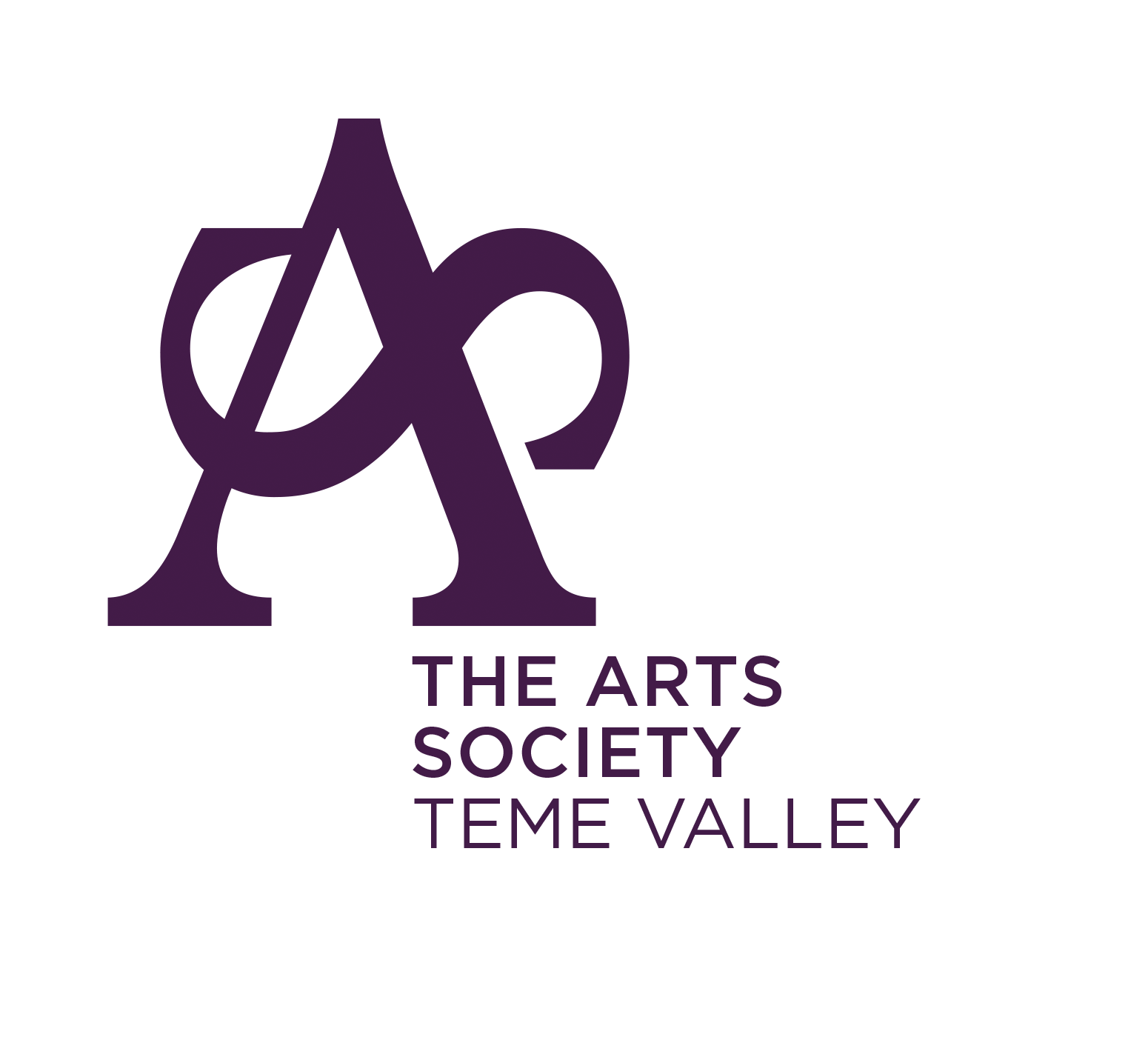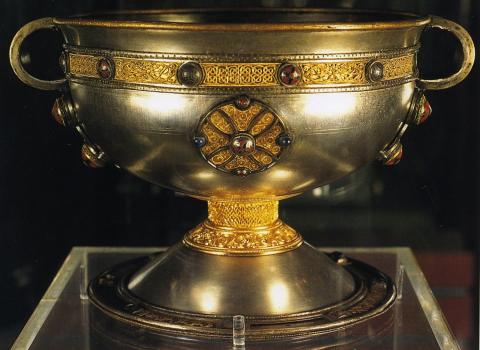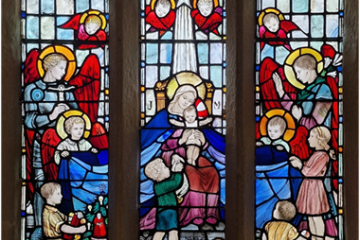Explore Insular art and the development of early Irish Christianity; includes tea/coffee and a professionally catered two-course meal.
N.B. BOOKING DEADLINE: WEDNESDAY 19th NOVEMBER
Please book as soon as possible, as we anticipate that this will be a popular event!
£45 for ASTV members, £50 for visitors.
This price includes tea/coffee, a professionally catered two-course lunch, and 3 captivating lectures by Arts Society accredited lecturer Dr Tom Duncan.
Native Celtic artists in the 700s and 800s A.D. adorned the Four Gospels with illuminated decoration and calligraphy that have earned the Book of Kells the reputation as the most beautiful book in the world.
This Exploration/Study Day deals with the development of Irish Christianity, the availability of new technologies, the production of a wide variety of liturgical objects for the new rituals of the recently established Irish church, and the monastic scriptorium.
Itinerary:
10.00am Arrival and coffee/tea
10.30am Lecture 1
The arrival of Christianity in Ireland brought about a fusion of cultures. In the beginning, the long established tribal settlements of unknown origin were renowned for their carving and metal working traditions, developed to a high level of sophistication during the Bronze Age. The arrival of Celtic influences a few centuries before the birth of Christ was another source of ideas that invigorated Irish art in the centuries dominated by the twin use of new technologies based on iron and a distinct, new form of ornamental embellishment.
11.30am-11.45am Comfort Break
11.45am-12.45pm Lecture 2
In the fifth and sixth centuries AD, these traditions were pressed into the production of a wide variety of liturgical objects for the new rituals of the recently established Irish church. To the native love of abstract ornament the monks added the human figure, and Christian narrative joined the repertoire of the metal workshop, the stonemason’s yard and finally, the monastic scriptorium. Great works of art such as the Ardagh Chalice and, above all, the Book of Kells were produced in large numbers.
12.45pm-2.00pm Lunch
2.00pm-3.00pm Lecture 3
The rise of Irish missionary activity and the consequent foundation of Irish monasteries in Scotland, the north of England and throughout Europe saw these particularly Irish styles known as “Insular” art forms spread far and wide. They are considered one of the principal glories of early medieval art. In their own day, they were considered (to quote the words of one medieval source – Giraldus Cambrensis) to be the work “not of men, but of Angels”.
How to book this event:
Please complete the application form and either send by email to wendy.mccracken@manchester.ac.uk OR send with a cheque (if that is your preffered method of payment) to :
Wendy McCracken, 21 Dinham, Ludlow, SY8 1EJ .
Please telephone Wendy on +44 (0)776 601 5329 if you have any queries or would like more information. Confirmation will be by email unless an s.a.e. is enclosed.
The Society reserves the right to cancel this Exploration/Study Day, if circumstances dictate, and may not be able to guarantee a full refund.
If you are having difficulty with the .PDF or .docx (Word) files, please contact Wendy with the following information:
Exploration Day Booking Form
The cost of the day is £45 per ASTV member, £50 per visitor, and includes coffee/tea and a professionally catered two-course lunch. Wine and fruit juice will be available for purchase, on the day.
Name(s) ……………………………………………………………………………………
Tel: ……………………………………………..
Email: ……………………………………………………………………………………….
Special Dietary Request: …………………………………………………………………
Emergency Contact
Name: …………………………………………………………………………………………
Tel: ……………………………………………..
Payment (please delete as appropriate):
I enclose a cheque for £………………, made payable to The Arts Society Teme Valley
OR
I will pay £……………… by BACS: sort code 20-39-64 a/c no: 00837520
THE ARTS SOCIETY ACCREDITED LECTURER

Dr Tom Duncan
After a generation in University life, has now retired from teaching to concentrate on lecturing to a wider public, and to leading tours to his major areas of interest: the architecture and archaeology of Ireland, and the Mediterranean basin.
OTHER EVENTS
Castle Street
An Arts and Crafts Christmas
Speaker: Kirsty Hartsiotis
Castle Street
Cartier: Jeweller of Genius
Speaker: Judy Rudoe







